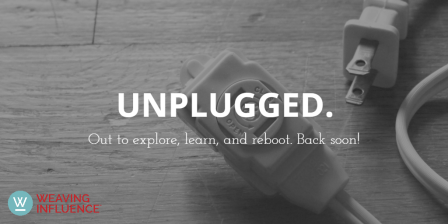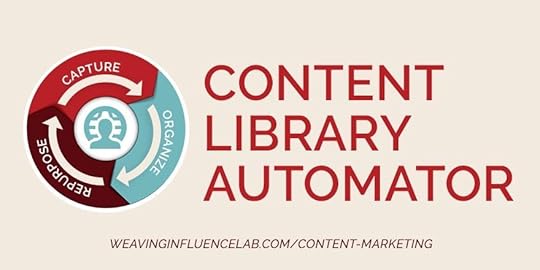Becky Robinson's Blog, page 33
November 27, 2018
5 Ways to Promote Your Book During the Holidays and Boost Sales

Books are one of the most popular Christmas gifts, and according to retailers, 41% of all books are sold during the Christmas holiday season. We’re deep in the holiday shopping season already — it starts as early as October — but that doesn’t mean it’s too late to put your promotion into high gear.
Here are 5 things we recommend doing this season.
Email your list. This is one of the easiest things you can do to promote your book during the holidays. The people on your email list are there because they are interested in your work. A gentle holiday email, with graphics and holiday language, will help them see your book as a great gift for someone on their list.
Share on social. I know, I know. You’re already posting regularly on social media. During the holiday season, keep up the good work, but add some holiday graphics or photos of your book in a holiday setting. Really drive home the message that your book would be a meaningful gift. (Find more holiday posting tips here.)
Throw a holiday party. Everyone loves a party! Consider a Facebook or Instagram live party, or do a Twitter chat. Promote the event in advance and offer prizes. This isn’t an event to directly pitch your book, but rather a way to thank those fans who’ve supported you all year long. It will also remind them of you and your work and will likely prompt increased sales, without you once saying “buy my book.”
Consider a BookBub or price reduction promotion. Lower the price? Yes, it might mean you receive less in royalties — but you could make up for that dip, in sales. A price reduction during the holiday season helps your book stand out from the crowd. Keep in mind, BookBub requires an application and they don’t accept all promotions, but it’s worth exploring.
Buy ads. Advertising is one of the best ways to get your book in front of prospective buyers. Amazon ads reach shoppers at the point of purchase and have the highest conversion rates for books. Note: a specific type of account is required to run Amazon ads. If you don’t have access, reach out to your publisher or a book launch partner, like Weaving Influence, for help. Facebook and LinkedIn ads also deliver strong results and are worth the investment.
Even implementing just one of these holiday tactics will help increase awareness of your book and lift sales!
Which tactic are you going to try?
November 20, 2018
Which Social Media Ads Should You Buy?

We rely on organic marketing efforts for the majority of our book launches, but during launch week, we like to pull out the stops and buy social ads. Advertising is a reliable way to increase awareness about your product and boost sales, but not all ads or ad platforms are created equal. Some social platforms deliver consistent results, while others tend to disappoint, no matter the budget.
Here’s our guide to the different types, their pros and cons, and what we’d recommend.
Facebook & Instagram
Facebook/Instagram ads are consistent performers and our go-to for clients launching books.
Pros:
Low point of entry. Ads can be purchased for as little as $20.
Great targeting. You can get very granular in targeting to find your niche audience.
Strong reporting. Facebook ads have easy to read metrics to let you know if your ad is doing well or not.
Conversions are solid. If you create a good ad, with strong language to connect with your audience, you’ll see solid conversions . . . meaning more people are buying your book.
Cons:
You need to have a personal profile to purchase ads, but you must also have a brand page in order to run ads.
LinkedIn ads do very well for business and leadership authors, and we often recommend them to clients with a healthy ad budget.
Pros:
Ads for business and leadership authors are placed in a professional environment. Even without targeting, ads are in front of a generally interested audience.
LinkedIn’s targeting is not as robust as Facebook’s but it does allow targeting around job titles, duties, and companies.
Conversion rates are strong.
Cons:
The price of ads is much higher on LinkedIn than on Facebook, and ads reach fewer people per ad dollar spent. Basically, you’ll pay more to reach the LinkedIn audience.
Twitter ads are not ones we recommend to clients, because ads on other platforms just perform better.
Pros:
Ads can be purchased for as low as $20.
Twitter offers a monthly plan that boosts every tweet up to 100 per month for just $99.
Cons:
Conversion rates are lower than other platforms. We don’t consider these ads worth the investment.
Google ads can deliver exceptional results, yet we never use them for book launches. These ads are terrific for businesses and events, but we’ve found they don’t do a great job selling books. It’s like using a blowtorch when a match would do.
Pros:
Keyword targeting allows you to get your ad in front of interested people in mid-search for just what you offer.
Strong conversion rates as long as your keyword game is on target.
Great for businesses, events, and other resources.
Cons:
These ads can get expensive FAST.
Overall, we have great success with Facebook and LinkedIn ads, and often use them in concert to drive interest and sales. Every product is different, as is every book. If you are interested in ads, experiment with small budgets to find the platform that works best for you. Even a monthly boosted post can help raise your profile, grow your audience, and sell your books.
Happy advertising!
November 16, 2018
How to Create Seasonal Social Media Content

Halloween is over and American Thanksgiving is almost upon us, and social media is overflowing with seasonal tweets and posts. Every business owner and book author is marketing their content and products. But should you jump on the bandwagon?
The Benefit of Seasonal Relevance
While it might be easy to schedule posts ahead of time with tools like this one, there’s a tendency to forget about the holidays and seasonal changes when you do things weeks or months in advance. And there’s definitely something to be said for producing lots of evergreen content.
But people will be more tuned in to the timely, seasonal messages around fall or Christmas or summer break. Everyone and their cousin will be thinking about that major holiday or seasonal rhythm, and you don’t want your voice to be the one they ignore simply because it doesn’t highlight that particular theme.
Another benefit to creating seasonal content is that you can re-use it down the road. Save those tweets and posts to your content library and have quick access to ready-made content a year or two later.
How to Create Seasonal Content
You may be sitting there, shaking your head at how much you still have to do this season, and wondering how to add one more social media task to your list. But it doesn’t have to be complicated or time-consuming. Here’s three simple steps to adding to your seasonal content library.
1. Create a list of major events and holidays.
Take 10 minutes to Google search for major days that fit within your field (such as World Book Day, Author Day, Boss’ Day, etc), and write them down in a single column. Next, add all the major holidays and seasonal events that you or your audience recognize (such as Valentine’s Day, summer break, back to school, Thanksgiving, Black Friday, New Year’s, etc.). Be sure to include the dates!
2. Add topics that coincide with your field.
Next to each event or holiday, add a few relevant topics you could focus on that relate to both the special day as well as your field of expertise. For instance, next to World Book Day you could write topics like: book recommendations (yours!), your own favorite books (to be more personal), or related reading suggestions (to further your expertise on a given topic).
3. Write 5-10 posts for each topic idea.
Finally, pull up your content library spreadsheet and start typing up some posts and tweets that you can schedule for each particular season. They don’t need to be fancy or profound . . . they just need to be you (more on that here). For instance: “Need a reading recommendation to celebrate World Book Day? Check out my book on topic XYZ, available here: [link].” Or: “In the spirit of World Book Day, here are my top 3 book recommendations on topic XYZ [include links and tag the authors of each book].”
While you may not have time to do all of this in one sitting, if you break it down into smaller time-frames (such as “January holidays” or “spring events”), you can easily create a year’s worth of seasonal content just 15 minutes at a time.
It will be worth it when that season comes, and you don’t have to scramble to figure out what to post. You’ll already have it ready to share!
Do you include seasonal content in your digital marketing? Why or why not?
Don’t have time to do all that? Our Content Library Automator tool now includes 100 seasonal tweets! Learn more.
November 13, 2018
Should You Be Buying Social Media Ads?

Community managers spend hours writing and creating content to grow social media organically — or without ad dollars. Organic content is the backbone of most successful content marketing plans, but it’s not the only tactic successful brands and thought leaders use. Advertising on social media helps augment an organic strategy.
Should you be buying social ads? The answer is yes, if you like growth. Here’s why . . .
1. Social ads help you reach more people. Every social platform has a unique algorithm that determines who gets to see the content you post. If you want more people to see the content you’ve spent hours creating, ads are the way around the algorithm. Ads can also help fledgling accounts find a solid, dedicated following.
2. Targeting allows you to reach specific people. Social advertising allows you to target your audience very specifically. If you have a niche personal brand, you can target ads to reach people in your niche. You can target by location, interests, job title, age, and sex. For instance, if you have a children’s book, you can target parents, teachers, and librarians, and provide each group with a unique message only they will see, without cluttering your newsfeed.
3. You don’t have to spend much to get results. On social media, you can pay as little as $20 and see results. Boosting a top-performing organic post can help grow your reach, engagement, and fan count, giving you a larger audience to market to next time. For example, we have a client who has strategically boosted one Facebook post each month. He’s seen the reach of his non-boosted content increase and he grew his fans from around 500 to over 10,000.
4. You can sell more books or products. By creating targeted ads, you can get your book or product in front of the people who would be interested in it, people who might not otherwise know anything about your book. You can market events, webinars, and courses — anything you have for sale can be promoted on social media. We’ve seen a direct correlation between book ads and sales and regularly recommend book ads for our clients.
We believe in the power of social advertising—and so do most brands and thought leaders. Many large consumer brands spend tens of thousands of dollars each month advertising their products on social media. You don’t have to have their budgets to be successful! The key is to be laser-focused on your goals, and only buy ads that help support those goals.
Even a $20 per month investment can help you achieve new levels of success.
Let us know if you’ve tried social advertising!
November 9, 2018
Three New Websites to Inspire Your Leadership Journey

It has been an exciting few months for the Web Team at Weaving Influence. From sparkles and innovative service, to Millennials and Sawubona, to great questions and meaningful conversations, the websites are as different as the business leaders that we had the privilege to work with.
We are pleased to share with you our three latest sites: ChipBell.com, SusanInouye.com, LeadingwithQuestions.com.
CHIP BELL
Dr. Chip R. Bell is a customer service keynote speaker and world-renowned authority on customer loyalty and service innovation. His highly popular keynotes reveal the best practices from the successful organizations leading the customer loyalty charge, giving audiences powerful cutting-edge ideas and unique strategies they can put into practice the minute they leave. For four of the last five years, Global Gurus ranked him in the top three best speakers in the world on customer service–two years in the top slot.
Dr. Bell has authored numerous national best-selling books, appeared live on many nationally know channels, and written more than 700 columns for many business journals, magazines, and top blogs. In addition, his training programs have won numerous awards. He is a speaker that meeting planners call awe-inspiring!
This is a website that truly sparkles and beautifully showcases Chip Bell’s unique approach to customer service, creating those unexpected, simple but inventive ways to take a customers’ breath away! This bold website provides the tools, tips and techniques for leading and delivering innovative service that sparkles.
Explore the blog for weekly wisdom on innovative service.
Learn more about Chip’s profoundly remarkable speaking engagements that actually inspire and instruct the audience.
Browse numerous award winning and bestselling books .
SUSAN INOUYE
Susan’s proven track record in transformational change over the past two decades has positively impacted the personal experience and bottom-line results for leaders of over 600 companies in forty industries. She is a recognized expert in working with millennials; and she has helped executives and managers increase levels of creativity and productivity by understanding and knowing how to engage and motivate this generation of unique talents.
Susan is deeply commitmented to community, and has raised funds and actively supports the work of many not-for-profit organizations. Her congressperson presented Susan with the Congressional Award for her outstanding participation and contribution to the community and her unselfish and untiring devotion for a better society. Coaching is the ultimate expression of Susan’s purpose in life. This passion for her work brings an integrity that helps unite communities and make the world a better place.
In a fast-paced world, where what’s new today is outdated tomorrow, companies stay ahead of the curve not by being on the cutting edge but by redefining the edge. Great leaders know they can’t do it alone. This website encourages leaders to discover the talents of a new generation of employees on a journey to solve the challenges of the twenty-first century.
Explore Sawubona Leadership and Susan’s simple yet profoundly impactful way of engaging others.
Inspire and motivate your group with the tools, strategies, and practices found here .
Learn more about Susan Inouye’s new book, Leadership’s Perfect Storm .
BOB TIEDE
Bob Tiede is passionate about helping leaders shift their paradigm from the pressure of having to have all the right answers to simply having a few of the right questions. He has been on the staff of Cru for 47 years, and currently serves on the U.S. Leadership Development Team.
The ideas in Leading With Questions, by Michael Marquart, changed forever how he looked at leadership, and provided the vision for this website.
On Leading With Questions, you are invited to join the growing league of leaders who are shifting their focus from having all the answers to asking the right questions.
The blog is a collection of wisdom from leaders around the globe.
Enjoy a selection of podcasts & interviews that will help you take your leadership journey to the next level.
Increase your leadership effectiveness with these resources .
A website is only a small glimpse into the lives of these amazing and inspiring business leaders. We encourage you to continue exploring these sites and the unique approaches that each of these individuals has taken to leading in the ever-changing world.
Interested in a new website for your own book or business? Contact the WI web team web@weavinginfluence.com.
November 6, 2018
How to Stand Out from the Crowd

Black Friday and Cyber Monday are just around the corner and marketers everywhere are making last-minute adjustments to their holiday campaigns, attempting to grab the attention of their preferred audience and garner the sales that they need to end the year in the black.
Whether we’re trying to grow our online platforms, market our speaking availability, or sell a record number of books, we all know that if we don’t hit just the right tone, we’ll miss our target. But how do we hit the bullseye when there is so much competition in the world?
What Makes You Unique?
The first thing to accept is that people have a choice about who to follow and what to buy, so if you want to be the standout, you need to present your offering in a way that makes people think they are missing out if they DON’T buy what you’re selling. If they have a choice, then you have to give them a reason to choose you over everyone else.
Start by answering these five questions, and then ask your friends, family, colleagues, and clients the same questions and compare answers:
What makes me/my book/speaking subject unique?
Why should people listen to me over another expert?
Who would benefit the most from what I have to share?
How can my book/talk/service help people change the status quo?
What makes me so excited I could think/talk/write about it for hours?
Capitalize on It
Once you have an idea of what makes you stand out from the crowd, then you need to capitalize on it. Keep in mind that it may have absolutely nothing to do with what you’re trying to sell, but it could be the key to finding that connection point with your audience.
Here are three examples that might help trigger something for you:
Do you have a sense of humor that helps you communicate and connect with your audience? Let that shine through in your social posts. Share the meme that made you snort this morning — people like to know you’re human, too.
Do you have a secret hobby that might surprise people — performing magic or doing imitations? Post a video of you doing something completely out of the ordinary from what folks might expect to see.
Did you just read an amazing book that really impressed you? Talk about it! Contact the author and ask them if they would like to be a guest on your blog or podcast. Don’t be afraid of promoting your competition from time to time — there’s room for everyone, and it shows that you’re not afraid to share the stage with others.
There is a quote that you’ve probably heard before, often attributed to Oscar Wilde, which says, “Be yourself, everyone else is already taken.” When it comes to figuring out your online persona and sales tactics, this is good advice to keep in mind. People who follow you on Facebook or Instagram want to know that the person they see on your accounts is a real person, someone they can identify with and connect to. Your platform will grow more authentically when you, yourself, are authentic in what you share, say, and do.
Only when what you have to say genuinely makes a noticeable difference in their lives, will people begin to choose and recommend you over others.
So, want to know the answer for how to stand out from the crowd? Be Yourself!
November 2, 2018
5 Reasons You Should Consider Unplugging from Social Media

I’ve been on Facebook since 2007 and personally blogging since 2010, but the first time I heard the term “unplugging” was just a few weeks after I began working with Weaving Influence in 2012. I had been involved in the launch of Whitney Johnson’s first book, Dare, Dream, Do, and when she decided to pause her online presence while on a post-launch break, she requested that I create an image that would represent her “unplugged” status. She even wrote a blog post about it before taking off.
I was intrigued with the whole idea of voicing your online pause to the world. At the time, I was blogging five days a week and struggling to find an active audience. Wouldn’t people stop visiting my blog or social accounts if they didn’t hear from me daily? Based on Whitney’s continued success (three books and a thriving speaking career), it’s obvious that her choice to unplug in no way affected the building of her platform. In fact, it probably helped, because her audience saw her practicing what she preached — temporarily stepping away in order to give herself space to dream.
Keeping Whitney’s unplugged idea in mind, I would occasionally use a version of the unplugged image on my blog and social sites when I felt like I needed a break from the drama that (far too often) ensued as a result of a mistimed comment or thoughtless response — mine or other’s. When the drama became too much, I made a conscious decision to go “unplugged” for everything outside of work, and for the majority of 2014 I flew under the radar on Facebook. I stopped posting, stopped commenting, and even removed all of my photos. Here’s what I learned as a result of that time.
5 Things I Learned from Going Unplugged
If you leave and then come back (as I did), people will still be there. I didn’t lose friends, and I didn’t lose followers. They were all there, ready to engage, and completely understanding of my need for a break.
Commenting is not a requirement. During my year under the radar, I learned how to read friend’s posts and move on, realizing that my quickly typed opinion wasn’t the best way for me to influence anyone, and could even turn them off from ever listening to me.
Taking a step back provided clarity. Being unplugged gave me a better sense of what I wanted to share, and how I wanted to use my platform when I returned. I began to use my private account to log what #iamthankful for, and my professional pages to share things that are relevant to my various endeavours and interests. (For more on balancing private vs. professional, read this.)
No one expects an explanation. I used to feel guilty when I didn’t show up, like I was letting people down if I wasn’t around. As my vision for how I wanted to use my platform changed, I realized that everyone is so busy, they really aren’t paying attention when I choose to unplug.
Don’t be a slave to the schedule. Professionally, I am all for having a plan in place, especially for those times when you are feeling uninspired, but there’s room to be flexible. I have personally found that I get far more engagement when I share something that’s exciting me in the moment (even if it’s not the ideal posting time or day), rather than blogging or sharing because it’s on the calendar.
It took me a few years, but I have finally grasped what Whitney understood when she originally unplugged: platform isn’t built because of how often you show up, but what you bring to it when you do. My own experience has taught me that making a plan to unplug is healthy, because engaging in the real world on a regular basis fills me up and provides me with more to share when I show up online.
The holidays are coming — why not give it a try this year? Feel free to use the images below on your social accounts, and let people know that you’re stepping away to recharge and come back to them with even more to share.


Right-click and ‘Save As’ then share on Facebook, Twitter, and Instagram!
October 30, 2018
How to Balance Public and Private Social Media

Social media has become a way of life — how we get our news, stay in touch with Grandma, and find fun things to do. When it also becomes a tool to market our personal brands, the line between personal and professional can become very blurry.
We don’t believe there must be a line — at least not everywhere.
Successful personal brands are just that: personal. People want to feel that they are making an authentic connection, even if you are trying to sell them a book or course. You make it feel authentic by being authentic. Sharing who you are, what your life is like, in addition to promoting your thought leadership. However, that does not mean sharing your vacation photos with strangers.
Here’s the approach we recommend
Keep the platform you use to connect with family and close friends private. This is where you let your hair down and roll out those vacation pics. For many people, Facebook is the real-life relationship platform. You can occasionally share your work here, but this is where you are primarily connecting with the people who mean the most to you.
If Facebook is your family place, you can create a public Facebook page to connect with readers and fans. This page is where you share your thought leadership, with occasional glimpses of other aspects of your life. It’s authentic because it’s you, with content shaped and directed by your thought leadership. For example, say you snap a cute photo of a squirrel in your bird feeder. It’s content you can share with your friends and family with a personal message, then share it on your page with a message referencing your thought leadership. You give your readers a glimpse of your life and personality, without getting into anything too private.
Instagram is another platform where you can keep two accounts, so your private life is private and your public brand has a rich and interesting outlet. Some of the content will overlap, but the messaging should be written with the specific audience in mind — friends or fans.
We recommend keeping both Twitter and LinkedIn brand-focused, while still showing personality. No need to have private and public accounts on these platforms. They are both very much public spaces.
Here are some ways you can balance your public and private social media.
Share something about your children or grandchildren without sharing names or their photos.
Share about your travels without revealing exact location.
Reveal who you are by sharing memes, articles, videos, and your thoughts on them.
Ask friends and family to support your work when you have a new project, but don’t make your personal posts ‘asks’ all the time.
When in doubt, follow Brené Brown on social. She does a great job of being personal and authentic, but keeping a definition between her public and private life… and you can, too!
October 26, 2018
How to Save Time & Energy with a Content Library

Generating quality, engaging content is taxing. We’re often racing against the clock, strapped with deadlines, or simply lacking creative energy. But in the world of digital marketing, keeping your personal or company’s online persona ever-present is imperative.
The first step to saving time and energy with content marketing is to create a content library — an organized list of topics you’ve covered and blogs/articles you’ve written. You can re-purpose legacy content into something fresh and imaginative to share. Content library creation is divided into three key steps: capture, organize, and re-purpose.
But if you’ve been blogging for years, capturing this content can take hours! Well, our team has created a tool called the Content Library Automator. The tool will generate a Google Spreadsheet containing an organized catalog of every blog post from your WordPress blog, including title, author, category, and link. You can easily sort this information to quickly get a snapshot of the breadth of content you’ve created. The tool also creates five templated social media posts for each blog post to highlight your archived content and quarterly updates to your library.

From there, you can sort the spreadsheet according to key themes you’ve written about, easily find posts on relevant topics, and reshape your content into new media articles, videos, graphics, and more. If you are looking for content for a new ebook, ideas for an upcoming newsletter, or topics for a keynote or webinar – your content library will store all the inspiration you need.
Streamline your efforts by effectively repurposing the valuable content you’ve already created.
Here are 3 ways a content library will benefit you:
You’ll use your marketing time to creatively infuse new life into your previously created content.
You’ll expose your audience to content with a fresh spin that’s been virtually hidden in your blog archives.
You’ll be inspired to explore sharing content through new social media features, like IG TV or Facebook live.
Are you making the most of your legacy blogs and articles? Explore the Content Library Automator to jumpstart your legacy content into new, innovative resources for your audience.
October 23, 2018
4 Benefits of Using an Editorial Calendar in Social Media

Think about some of your favorite social media accounts or top influencers to follow…what about their presence intrigues you? I’d imagine that their message is the priority, followed closely by the seemingly effortless way they share relevant, meaningful content at every turn!
Here’s the secret: This doesn’t occur by happenstance. Successful social media users have a method to their madness, which involves a well-thought-out plan for consistently showing up online every day. If you are eager to make social media a priority, exploring an editorial calendar is a great tool to build your presence.
An editorial calendar is a digital sheet (such as a Google Sheet) where you identify the dates to post, which social media channels to utilize, and outline the copy for each post.
Below are four ways that an editorial calendar can maximize your digital presence:
Plan ahead to avoid missteps.
After a long day (or week) of answering phone calls, shuffling to meetings, and thumbing through emails, you realize that you haven’t invested any time on social media. To counteract this, you quickly pop in to respond to comments and mentions. Social media isn’t a purely reactive effort – you need to be proactive. And, that starts with planning content 2-3 weeks in advance. You can still incorporate creativity for “real-time” posts but planning ahead ensures you don’t miss a beat in regular posting.
Create consistency across your channels.
Although posting the same content on each social platform is frowned upon, you DO want to create the same tone in branding across your social media. An editorial calendar allows you to compare each channel in the same spreadsheet. You’ll be able to evaluate if your messaging is consistent across each platform.
Identify common themes and content for repurposing.
In an editorial calendar spreadsheet, you have an organized reference point of past posts and a log of evergreen content. You can take planning a step further by identifying what themes are present in the content you’re sharing and brainstorming approaches to reuse them. Start asking yourself – Can this topic be explored further? How can I repurpose some of my content into new innovative approaches? What content is resonating well with my audience?
Team members can post in your absence.
Using an editorial calendar can give you margin to breathe in times of travel, unforeseen personal matters, vacation, and so on. You can rest at ease knowing that your online voice is remaining consistent because you made the effort to plan ahead.
Aren’t sure what to include in an editorial calendar or how to start one? Explore our Content Library Automator tool to jumpstart your planning.



